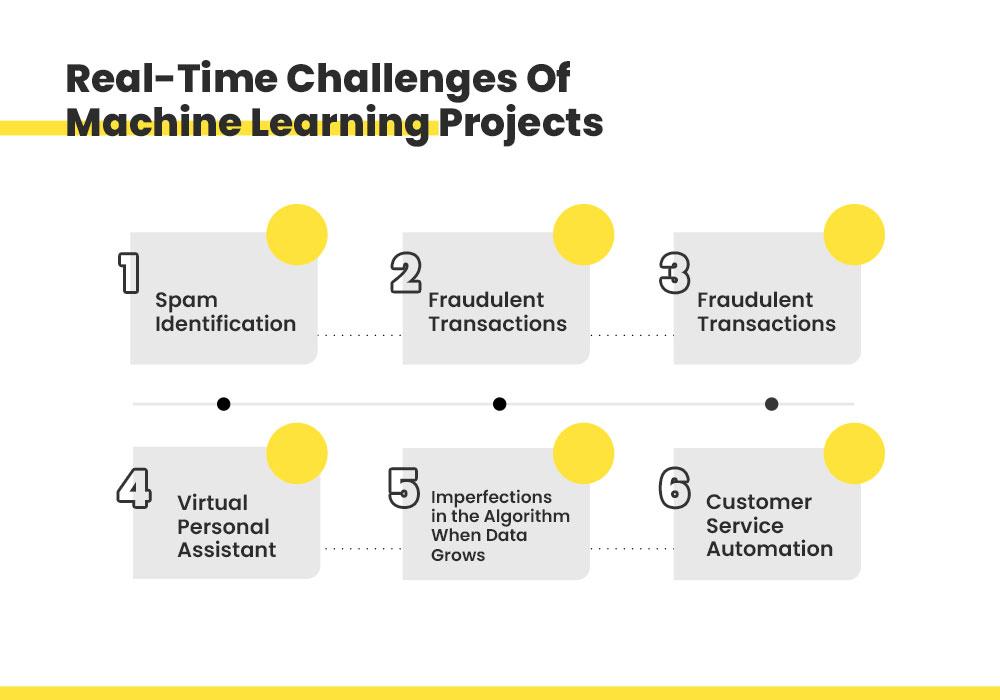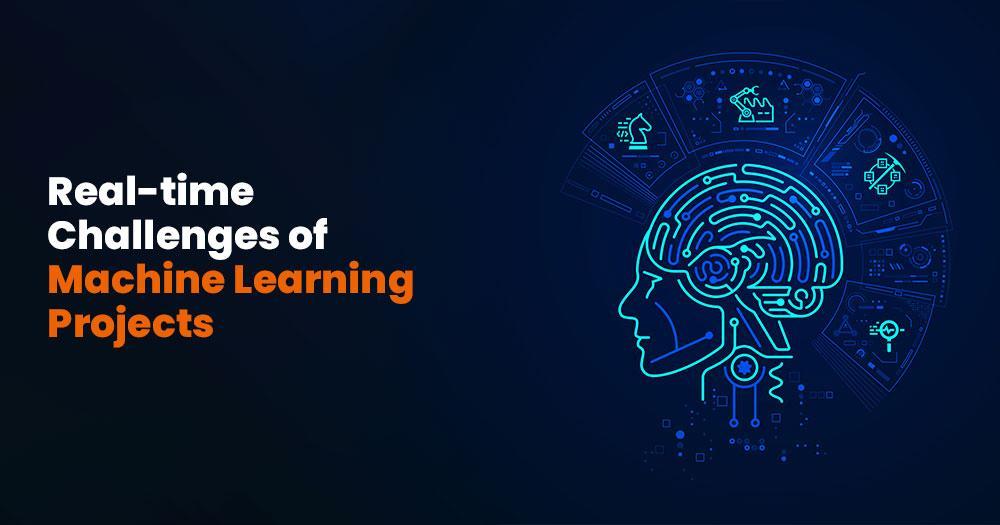Introduction
In Machine Learning, a procedure analyzes the data for building and training models. Machine learning is everywhere now; from Amazon product recommendations to self-driven cars, it has excellent value throughout. As per the latest research, the global machine-learning market is expected to grow by 43% by 2024. This revolution has reached the heights of the demand for machine learning professionals to a great extent. AI and machine learning jobs have observed a significant growth rate of up to 75% in the past four years, and the industry is constantly growing. A career in the Machine learning domain gives job satisfaction, excellent growth, insanely high salary, but it is a complicated and challenging process. This growth has brought a lot of challenges for machine learning. In this article, we are going to talk about the challenges of machine learning.
A type of artificial intelligence – machine learning is IT systems’ capacity for recognizing patterns in massive databases to find solutions for the issue independently. Put basically. It is an umbrella term for many techniques and tools that can assist computers in learning and adapting independently.
Contrary to traditional programming, which manually creates a program that uses input data and runs on a computer to produce the output, in Machine Learning or augmented analytics, the input data and work are given to an algorithm to make a program. It leads to powerful insights that can assist in predicting future outcomes.
Machine learning algorithms do all that and more by using statistics to find patterns in massive amounts of data that encompass everything from images, numbers, words, etc. If it can store the data in digital form can feed it into a machine-learning algorithm for solving specific problems.
You may also like to read: What Is Machine Learning and How Does it Work?
Real-time Challenges of Machine Learning Projects

Spam identification
Spam identification is one of the most simple applications in machine learning. Most of our email inboxes also have an unsolicited volume or spam inbox, where the email provider automatically filters rejected spam emails.
How to know that the email is spam?
The challenge of Machine Learning model is training for identifying all spam emails based on standard features such as the email, subject, and sender content.
If you look at your email inbox carefully, you will realize that picking out spam emails is relatively easy as they look very contradicting from real emails. Machine learning techniques used these days can automatically filter these spam emails in a very successful way.
Spam detection is one of the finest and most familiar problems solved by Machine Learning. Neural networks employ content-based filtering to classify unwanted emails as spam. These neural networks are related to the brain, which can identify spam emails and messages.
Fraudulent Transactions
Fraudulent banking is a challenge of machine learning in which transactions are familiar today. However, it is not achievable (in terms of cost involved and efficiency) to investigate each transaction for fraud, which translate to a poor customer service experience.
Machine Learning in finance can automatically make super-accurate prediction maintenance models for identifying and prioritizing all types of possible fraudulent activities. Businesses can then build a data-based queue and investigate high-priority incidents.
It enables you to deploy the resources in an area where you will see the greatest return on your investigative investment. Further, it also assists you in optimizing customer satisfaction to protect their accounts and not challenge valid transactions. Such fraud detection uses machine learning can assist banks, and financial organizations save money on conflict/chargebacks as one can be trained Machine Learning models for flagging transactions that appear fraudulent based on particular features.
You may also like to read: 6 Major Real-Time challenges of Machine Learning projects
Demand Forecasting
The concept of demand forecasting in the challenges of machine learning is assisted in various industries, from retail and e-commerce to manufacturing and transportation. It has historical data for Machine Learning algorithms and models to predict the number of products, services, power, and much more.
It enables businesses to effectively collect and process data from the whole supply chain, minimizing overheads and maximizing efficiency.
ML-powered demand to develop forecasts is very accurate, fast, and transparent. Businesses can be created as meaningful insights from a continuous supply/demand data stream and adapt to changes accordingly.
Virtual Personal Assistant
From Alexa and Google Assistant to Cortana and Siri, we have different virtual personal assistants for finding factual information using our voice instruction, such as calling someone, opening an email, scheduling an appointment, and more.
These virtual assistants use Machine Learning algorithms to record our voice instructions, send them over the server to a cloud, follow by decoding them using Machine Learning algorithms and act accordingly.
Imperfections in the Algorithm When Data Grows
So you have found quality data and trained it amazingly, and the predictions are definite and accurate, which is one of the challenges of machine learning. Now you have learned how to make a machine learning algorithm. The model may become incompetent in the Future as data grows. The present best model may need to be revised in the coming Future and require further rearrangement. So it would help if you had constant monitoring and maintenance to keep the algorithm working. This is one of the most exhausting issues faced by machine learning professionals.
Customer Service Automation
Managing an increasing number of online customer interactions has become a pain point for most businesses. It is because they simply don’t have the customer support staff available to deal with the sheer number of inquiries they receive daily.
Machine learning algorithms have made it possible and super easy for chatbots and other similar automated systems to fill this gap. This application of machine learning enables companies to automate routine and low priority tasks, freeing up their employees to manage more high-level customer service tasks.
Further, Machine Learning technology can access the data, interpret behaviors and recognize the patterns easily. This could also be used for customer support systems that can work identical to a real human being and solve all of the customers’ unique queries. The Machine Learning models behind these voice assistants are trained on human languages and variations in the human voice because it has to efficiently translate the voice to words and then make an on-topic and intelligent response.
Conclusion
As advances in machine learning evolve, the range of usage and applications of machine learning will also maximize. For effectively navigating the business issues in this new decade, it’s worth keeping an eye on how we can deploy challenges of machine learning applications across business domains to reduce costs, improve efficiency, and deliver better user experiences.
However, for implementing machine learning accurately in your organization, it is imperative to have a trustworthy partner with deep-domain expectations.


